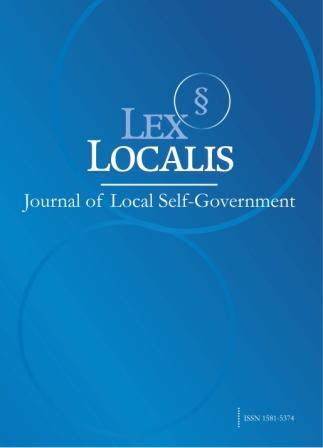Peer-led Growth Community: A Case Study of Undergraduate and Graduate Interactive Moral Education in China
DOI:
https://doi.org/10.52152/800087Ključne besede:
China; dynamic mechanisms; moral cultivation; peer education; undergraduate–graduate interactionPovzetek
The interactive moral education model between undergraduate and graduate students leverages their contextual and age-related similarities, thus emphasizing peer-led engagement to foster holistic development. Through the establishment of collaborative platforms and innovative methodologies, this model integrates moral character cultivation, social practice, career guidance, academic mentorship, research training, and peer counseling. Grounded in peer education theory, mutual growth is promoted through bidirectional support, self-discipline, and heteronomy. Based on a case study, this study presents a six-dimensional practice framework of such moral “education,” moral character cultivation, social practice activity, employment guidance, learning guidance, research ability guidance, and peer counseling implemented at University Y. Furthermore, our research demonstrates the efficacy of this model in enhancing students’ competencies and addressing systemic challenges in China’s expanding higher education system. Despite the lack of value-added evaluation of student involvement, this research underscores the importance of peer education for students of different levels and can provide a reference for relevant schools globally to implement such education
Literatura
An, J., Choi, S., & Lim, J. H. (2024). Peer relationship instructions in inclusive educational settings in Korea: A meta-analysis. Asia Pacific Education Review. https://doi.org/10.1007/s12564-024-09971-4
Astin, A. W. (1984). Student involvement: A developmental theory for higher education. Journal of College Student Personnel, 25(3), 297-308.
Bandura, A. (2001). Social cognitive theory: An agentic perspective. Annual Review of Psychology, 52(1), 1–26. https://doi.org/10.1146/annurev.psych.52.1.1
Bozzi, M., Mazzola, R., & Zani, M. (2023). Peer learning in higher education: An example of practices. NUOVO CIMENTO C-COLLOQUIA AND COMMUNICATIONS IN PHYSICS. https://doi.org/10.1393/ncc/i2023-23206-7
Colvin, J. W., & Ashman, M. (2010). Roles, risks, and benefits of peer mentoring relationships in higher education. Mentoring & Tutoring: Partnership in Learning, 18(2), 121–134. https://doi.org/10.1080/13611261003678879
Djohari, N., & Higham, R. (2020). Peer-led focus groups as ‘dialogic spaces’ for exploring young people’s evolving values. Cambridge Journal of Education, 50(5), 657–672. https://doi.org/10.1080/0305764X.2020.1754763
Durlak, J. A. (1979). Comparative effectiveness of paraprofessional and professional helpers. Psychological Bulletin, 86(1), 80–92. https://doi.org/10.1037/0033-2909.86.1.80
Fred B. Newton, Steven C. (2010). Ender.Students Helping Students:A Guide for Peer Educators on College Campuses(Second Edition). San Francisco, CA: Jossey-Bass.
Goodlad, S. (1998). Mentoring and tutoring by students. London: BP Educational Service.
Han, Y. H., & Zhou, Q. Y. (2019). 高校“本研一体化”育人模式创新研究 [Research on innovation of integrated education model of undergraduate and graduate students]. 改革与开放 [Reform & Opening]. https://doi.org/10.16653/j.cnki.32-1034/f.2019.03.033
Hurtado, S., & Carter, D. F. (1997). Effects of college transition and perceptions of the campus racial climate on Latino college student’s sense of belonging. Sociology of Education, 70, 324–435 .https://www.jstor.org/stable/2673270
Kram, K. E., & Isabella, L. A. (1985). Mentoring alternatives: The role of peer relationships in career development. Academy of Management Journal, 28(1), 110–132. https://doi.org/10.5465/256064
Nucci, L., Narvaez, D., & Krettenauer, T. (2014). Handbook of moral and character education (2nd edition). Routledge, NY.
Ling, Y. Q. (2021). 高校本科生与研究生人才培养联动机制研究——以财经类高校为例 [Research on multi-level joint practical training of “supervisor graduate undergraduate” under school enterprise cooperation]. 高教学刊 [Journal of Higher Education], 07(7). https://doi.org/167-170.10.19980/j.CN23-1593/G4.2021.32.040
Liu, Z. B. (2020). 研本“1+1”互动式教育管理模式的探索与实践研究——以山东省A大学理学院为例 [Exploration and practice of “1+1” interactive educational management mode for graduate and undergraduate students—A case study of the College of Science at a university in Shandong Province], 改革与开放[Reform & Opening], 18, 105–108. https://doi.org/10.16653/j.cnki.32-1034/f.2020.018.026
Marx, K. H., & Engels, F. (1995). 马克思恩格斯选集(第一卷) [Selected works of Marx and Engels (Vol. 1)]. People’s Publishing House.
Miller, J.E., Groccia, J.E., & Miller, M.S.E. (2001). Student-assisted teaching: A guide to faculty–student teamwork. Bolton, MA.
Ministry of Education. (2019). China makes great leaps in education over 70 years. http://en.moe.gov.cn/news/media_highlights/201909/t20190910_398495.html
Ministry of Education. (2022). A review of achievements in postgraduate education (2012–2021). http://en.moe.gov.cn/documents/reports/202210/t20221022_671529.html
Ministry of Education. (2024a). Number of schools, educational personnel, and full-time teachers by type and level. http://en.moe.gov.cn/documents/statistics/2022/national/202401/t20240110_1099540.html
Ministry of Education. (2024b). Number of students of formal education by type and level. http://en.moe.gov.cn/documents/statistics/2022/national/202401/t20240110_1099540.html
Nora, A. (1987). Determinants of retention among Chicano college students: A Structural Model. Research in Higher Education, 26(1), 31-59.
Nora, A., & Crisp, G. (2007). Mentoring students: Conceptualizing and validating the multi-dimensions of a support system. Journal of College Student Retention: Research, Theory & Practice, 9(3), 337–356. https://doi.org/10.2190/CS.9.3.e
Pascarella, E., & Terenzini, P. (1991). How college affects students: Findings and insights from twenty years of research. San Francisco, CA: Jossey-Bass.
Peng, L. L. (2018). 医学研究生、本科生结对协同培养模式探讨 [Discussion on cooperative training mode of medical graduate and undergraduate students in pairs]. 教育现代化 [Education Modernization], 06(39). https://doi.org/10.16541/j.cnki.2095-8420.2019.39.006
Rest, J. R., Narvaez, D., Bebeau, M. J., & Thoma, S. J. (1999). A neo-Kohlbergian approach: The DIT and schema theory. Educational Psychology Review, 11(4), 291–324. https://doi.org/10.1023/A:1022053215271
Schwartz, S. H. (2012). An overview of the Schwartz theory of basic values. Online Readings in Psychology and Culture, 2(1). https://doi.org/10.9707/2307-0919.1116
Tae, L. I. (2017). 도덕적 정체성 형성을 위한 규범적 또래 압력으로서 또래 상담 활용 방안 [Measures to utilize peer counseling as peer normative pressure for developing moral identity], 초등도덕교육 [Korean Elementary Moral Education Society], 55, 189–219. https://doi.org/10.17282/ethics.2017..55.189
Wu, L. (2010).研究生与本科生互动机制的探索与研究 [The exploration and research of the interaction mechanism between graduate students and undergraduates]. 当代教育论坛 [Forum on Contemporary Education], 1, 78–79. https://doi.org/10.3969/j.issn.1671-8305.2010.01.030
Yangzhou University. (2021). 扬州大学2021届毕业生就业质量报告 [Graduates employment quality report] (pp. 42) (01–10). https://yzu.91job.org.cn/sub-station/detail?xwid=D65FA6ABA9FDA1C4E0530100007F3708&xxdm=11117
Yangzhou University. (2022). 扬州大学2022届毕业生就业质量报告 [Graduates employment quality report] (pp. 12–31) (01–10). https://yzu.91job.org.cn/sub-station/detail?xwid=F5A6613307D13278E0530100007F2B9F&xxdm=11117
Ziller, R. G.(1963) . The social self . New York: Pergamon Press
Zhao, C. M., & Kuh, G. D. (2004). Adding value: Learning communities and student engagement. Research in Higher Education, 45(2), 115–138. https://doi.org/10.1023/B:RIHE.0000015692.88534.de
Zheng, L. L., & Wang, J. (2024). 校企合作下“导师—研究生—本科生”多层次联合实践培养研究 [Research on multi-level joint practical training of “supervisor graduate undergraduate” under school enterprise cooperation]. 创新创业理论研究与实践 [The Theory and Practice of Innovation and Entrepreneurship], 07(32). http://www.cxcybjb.com/CN/Y2024/V7/I3/131
Objavljeno
Številka
Rubrika
Licenca
Avtorske pravice (c) 2025 Lex localis - Journal of Local Self-Government

To delo je licencirano pod Creative Commons Priznanje avtorstva-Nekomercialno-Brez predelav 4.0 mednarodno licenco.








